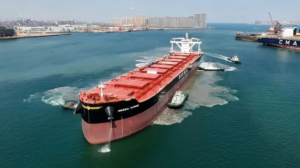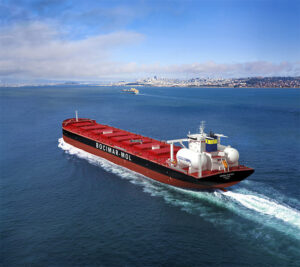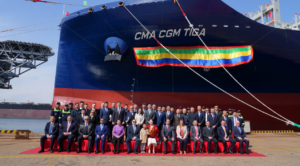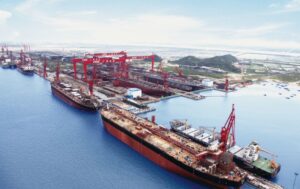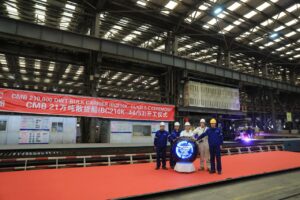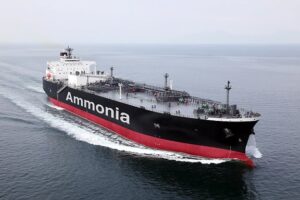Belgium’s CMB lifts option for ammonia-powered Capesize duo
Belgium-based shipping company Compagnie Maritime Belge (CMB) has exercised an option for the construction of two 210,000 dwt bulkers at China’s Qingdao Beihai Shipbuilding Heavy Industry, adding to its already massive orderbook at the yard.

Namely, CMB already has ten 210,000 dwt bulkers under construction at Qingdao Behai, all designed to be fuelled by ammonia. The latest order will also see ammonia-fuelled engines installed on the bulkers, once the respective engines become available.
CMB’s subsidiary, CMB.TECH, has joined forces with Swiss marine engine manufacturer WinGD to introduce ammonia dual-fuel X72DF engines to its Capesize newbuilds which are scheduled for delivery in 2025 and 2026.
WinGD has indicated that these novel engines will be developed based on the X92B engine model, chosen for its exceptional fuel efficiency, which renders it an ideal foundation for the creation of large-bore ammonia-fueled engines.
The marine engine powerhouse expects to deliver its first X-DF-A dual-fuel ammonia engine by the first quarter of 2025.
Related Articles
-
WinGD: X-DF-A dual-fuel engine to run on ammonia by Q1 2025
Business Developments & Projects
Like its sister ships, the newbuilding duo is slated for delivery in 2025, according to Intermodal Shipbrokers, which did not disclose further details of the transaction, including the price for the pair of vessels.
In addition to pioneering propulsion technology, the shipbuilder had said that the vessel design would incorporate a range of energy-saving features, encompassing optimized hull shaping and the overall arrangement of the hull structure and equipment. These ships will measure 300 meters in length and 25.2 meters in width. They will be equipped with two 3,000 cubic meter (cmb) ammonia fuel storage tanks, and will be compliant with the stringent IMO Tier III regulations.
Ammonia, known for its potential as a green and sustainable fuel, has gained traction in recent years as a viable option for reducing greenhouse gas emissions in the shipping sector. When burned, ammonia produces no carbon dioxide (CO2) emissions, making it a promising candidate to help the industry meet its decarbonization goals.
CMB’s decision to opt for ammonia-fueled vessels aligns with the International Maritime Organization’s (IMO) decarbonization strategy and the European Union’s commitment to achieving carbon neutrality by 2050.
Related Article
-
Are we ready for ammonia?
Transition
While ammonia holds great promise as a clean energy source for shipping, it is worth noting that its adoption comes with certain challenges, including the development of safe and efficient storage and handling systems, as well as the sourcing of sustainable ammonia production methods. However, these challenges are being actively addressed by industry leaders and research institutions, indicating a growing commitment to making ammonia a practical and environmentally responsible choice for the future.

